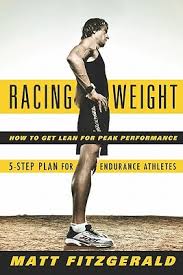[spacer height=”20px”]
Whether your training plan is developed based on periodization or to target specific systems we have all found ourselves knocking out 3 to 5 minute efforts to help build our VO2 Max or commonly called “big aerobic engine”. So what is this beast and how do I increase it?
VO2 max (maximal oxygen consumption) is the maximum capacity of an individual’s body to transport and use oxygen during incremental exercise. In cycling, many coaches and athletes consider this the gold standard test. Biologically we talk about this because it is a good way to quantify the body’s ability to generate ATP through aerobic metabolism. I could go on and talk about all of the science behind this but, since we have all already bought into the concept… how do I increase mine?
According to Hunter Allen and Andrew Coggan’s book, Training and Racing with a Power Meter, VO2 max is the area that lies between 106 and 120% of our Functional Threshold Power (FTP). At this level, most people can maintain between 3 and 8 minutes effort, thus why most intervals for VO2 Max all within this range. In racing, this effort is normally maintained on the lower end of 3 minutes then the higher 8 minute. So for the purposes of intervals, increasing to maximum repeatable power at 3 minutes becomes the objective.
The intervals that I prefer are those that follow the principal of Intervals to Exhaustion (for more information p73 of Allen/Coggan “Guidelines for Optimal Intervals”). Basically, we know that an effort of 106 to 120% is necessary to stimulate change in the VO2 Max System. I like doing a 3 minute on 3 minute recovery routine. The important thing to remember is that you are supposed to ride as fast as you can for a period of 3 minutes (but not faster than you can repeat it a several times). In the past I have seen power files marked where the athlete had massive power to begin, dies after 2 minutes but the three minute average is over 106%. This was actually an Anaerobic Capacity workout with recovery not VO2 Max. During the three minutes the power should not drop significantly, pacing strategy is necessary.
So Intervals to Exhaustion, the athlete goes out and begins to execute 6 efforts at 3 minutes with 3 minute recovery. These efforts should be somewhere between 106 and 120% of their FTP. Once they have a repeatable number it should be noted. Assume that the athlete’s FTP is 200. Their efforts should be between 212 and 240 watts. For VO2Max, the athlete should stop the intervals once they (continuously) drop below 212 watts. If they continue to work but producing efforts of only 195 or so, they are working below the intensity needed to simulate the VO2Max Intervals.
After they have successfully complete the first 6 efforts, I have them rest / recovery for about 10 minutes and then move onto a second 6 intervals. If they execute 2 sets at greater than 106%, a good warm-down is called for and I recheck to see if I should have adjusted their FTP.
If you are interested in other VO2Max efforts, drop me an email and I am more than happy to share.

